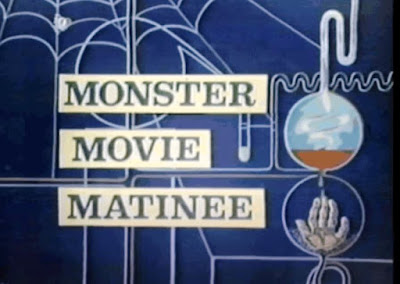Book Review: 'Under the Fang' edited by Robert R. McCammon
4 / 5 Stars'Under the Fang' (336 pp.) was published by Pocket Books in August of 1991. The cover illustration is by Mitzura.
There were quite a lot of horror anthologies issued during the 'Paperbacks from Hell' boom years of the 1980s and early 1990s. I remember picking this book up soon after its publication, and deciding it was pretty good. When re-read after the passage of nearly 31 years, it still holds up well.
The contributors, all of whom wrote stories specifically for this volume, include a Who's Who of horror writers of the early 1990s. All contributions adhere to the anthology's premise that the Vampires Have Won, and the globe is under their thrall.
Some humans resist, and some collaborate.........
My capsule summaries of the contents:
Editor McCammon leads off with 'The Miracle Mile'. In the aftermath of the Vampire Apocalypse, Kyle leads his family to a rundown oceanside resort and - hopefully - safety.
Nancy Collins provides 'Dancing Nightly', about a dive bar that caters to vampires. There is some memorable splatterpunk content. One of the better entries in 'Under the Fang'.
'Stoker's Mistress', by Clint Collins, features a near-future USA under the reign of the vampires. There is a historical connection to the author of Dracula.
Sidney Williams and Robert Petit team up for 'Does the Blood Line Run on Time ?'. This is an action-centered tale of guerilla resistance against the vampire overlords.
'Red Eve', by Al Sarrantonio, is intended as a homage to Ray Bradbury and as such, features ornate prose overlaid on a thin plot garnished with sci-fi elements.
'We Are Dead Together', by Charles de Lint: gypsies, and vampires. de Lint could at times overindulge in prose, but perhaps because it's only six pages long, this tale is concise and effective.
Chet Williamson contributes 'Calm Sea and Prosperous Voyage'. In the aftermath of the vampire takeover, Richard and Jill take up residence in a cabin in the woods of northern Pennsylvania. They discover that vampires aren't the only thing they have to worry about. Some splatterpunk sequences give this entry an edge that makes it one of the better stories in the anthology.
'Advocates', by Suzy McKee Charnas and Chelsea Quinn Yarbro, is an interesting mashup featuring two 'franchise' characters, Charnas's Dr. Edward Lewis Weyland (who debuted in the novel The Vampire Tapestry, 1980) and Yarbro's Comte de Saint-Germain (Hotel Transylvania, 1978). Placed in a near-future world where the Vampires Rule, Weyland finds himself in considerably difficulties, and must rely on the legal maneuverings of Saint-Germain in order to win freedom. It's an interesting premise, but unfortunately the collaboration never went beyond this one short story.
Splatterpunker Richard Laymon provides 'Special'. Hot chicks are captured by a squadron of vampire Bros, who then take the chicks to a fortified compound and subject them to all manner of sick abuse - ! Real-deal, unapologetic splat, 'Special' gives the anthology a nice note of excess.
'Herrenrasse', by J. N. Williamson, features an Anne Rice-style dialogue between an urbane vampire and his human captive. It's lengthy, and it's underwhelming.
Ed Gorman's 'Duty' is an interesting look at how things would have to be handled by the normal folk in the event the vampires take over. Another of the better entries in the anthology.
In 'Midnight Sun', by Brian Hodge, an outpost in the Arctic mounts a dogged resistance to the rule of the vampires.
David N. Meyer III contributes 'A Bloodsucker'. The first-person narrator, a vampire, offers humans immortality. But everything has its price.
'Prodigal Son', by Thomas F. Monteleone, sees a vampire pondering whether he can regain his humanity. He does this by walking the beach at night, and thinking Deep Thoughts about the hapless sea creatures stranded on the shore. Not exactly a stirring theme for a horror story.
[ Evidently Monteleone realized he couldn't make the deadline for an original submission for 'Under the Fang', and decided to recycle, because 'Prodigal' is a light reworking of his story 'The Star-Filled Sea Is Smooth Tonight', which was published in 1977 in a German sci-fi magazine, and then in 1980 in the Zebra Books anthology 'Chrysalis 6'. The only real difference in 'Prodigal' is that a vampire substitutes for the traumatized spaceship pilot of 'Star-Filled Sea'. ]
'There Are No Nightclubs in East Palo Alto', by Clifford V. Brooks, features the human subjects of the vampire kingdom finding solace in folk music. This allows the author to provide the story with passages of italicized song lyrics. This is never a good sign. I don't want to read someone's homemade song lyrics in a vampire story.
'Juice', by Lisa W. Cantrell, places vampires and their human allies in a backwoods setting. There is a creepy denouement. Another standout selection.
'Behind Enemy Lines', Dan Perez, features crisp, well-written combat sequences as humans and vampires fight it out in jungle terrain. Another of the better entries in the anthology.
Summing up, with 'Under the Fang', the majority of the contributors understood the design of the anthology and responded with worthwhile material. It contains enough good stories to be a solid four-star anthology, and one of the better such releases of the era of Paperbacks from Hell. Well worth searching out for.















































































